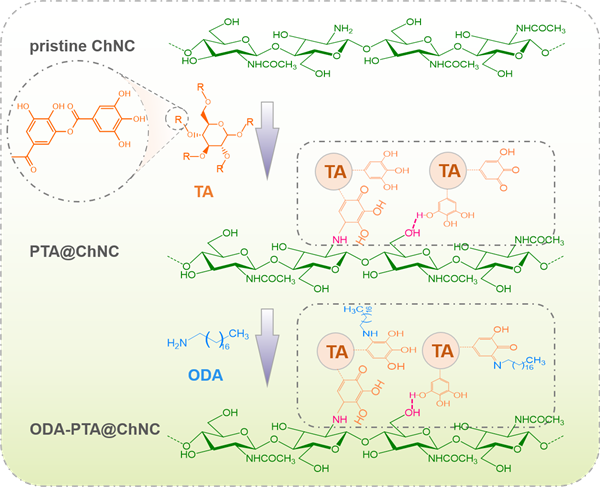Effect of Hydrophobic Modification of Chitin Nanocrystals on Role as Anti-Nucleator in the Crystallization of Poly(ε-caprolactone)/Polylactide Blend
作者:Fen Ma, Yuxin Gao, Wenyuan Xie, Defeng Wu
关键字:chitin nanocrystals; surface modification; anti-nucleation.
论文来源:期刊
具体来源:International Journal of Biological Macromolecules
发表时间:2024年
International Journal of Biological Macromolecules, 2024, 269, 132097.

Biodegradable polymer blends filled with rod-like polysaccharide nanocrystals have attracted much attention because each component in this type of ternary composites is biodegradable, and the final properties are more easily tailored comparing to those of binary composites. In this work, chitin nanocrystals (ChNCs) were used as nanofiller for the biodegradable poly(ε-caprolactone) (PCL)/polylactide (PLA) immiscible blend to prepare ternary composites for a crystallization study. The results revealed that the crystallization behavior of PCL/PLA blend matrices strongly depended on the surface properties of ChNCs. Non-modified ChNCs and modified ChNCs played completely different roles during crystallization of the ternary systems: the former was inert filler, while the latter acted as anti-nucleator to the PCL phase. This alteration was resulted from the improved ChNC-PCL affinity after modification of ChNCs, which was due to the ‘interfacial dilution effect’ and the preferential dispersion of ChNCs. This work presents a unique perspective on the nucleation role of ChNCs in the crystallization of immiscible PCL/PLA blends, and opens up a new application scenario for ChNCs as anti-nucleator.
PDF DOWNLOAD:
https://www.sciencedirect.com/science/article/pii/S0141813024029027